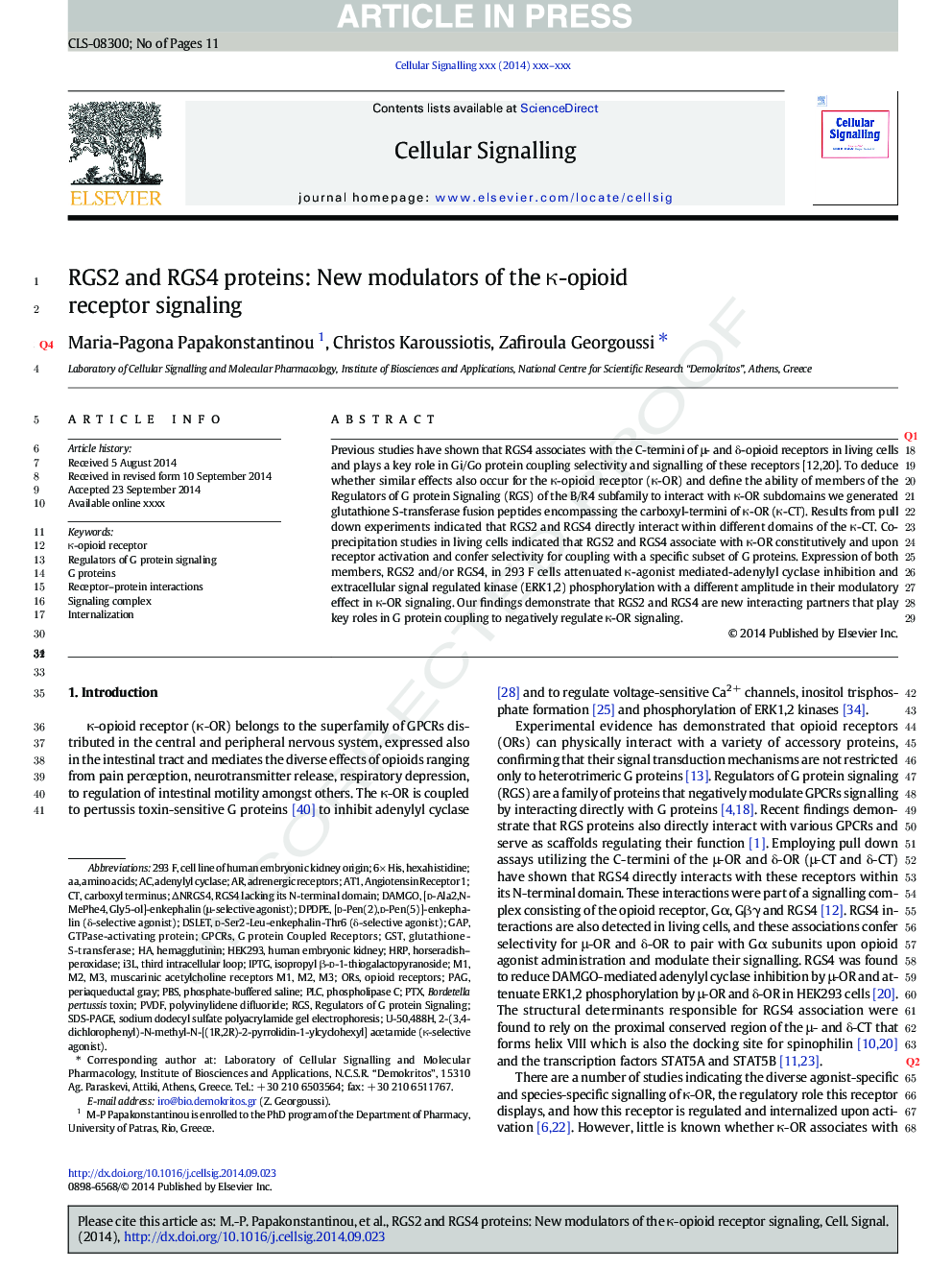| Article ID | Journal | Published Year | Pages | File Type |
|---|---|---|---|---|
| 10815152 | Cellular Signalling | 2015 | 11 Pages |
Abstract
Previous studies have shown that RGS4 associates with the C-termini of μ- and δ-opioid receptors in living cells and plays a key role in Gi/Go protein coupling selectivity and signalling of these receptors [12,20]. To deduce whether similar effects also occur for the κ-opioid receptor (κ-ÎR) and define the ability of members of the Regulators of G protein Signaling (RGS) of the B/R4 subfamily to interact with κ-ÎR subdomains we generated glutathione S-transferase fusion peptides encompassing the carboxyl-termini of κ-OR (κ-CT). Results from pull down experiments indicated that RGS2 and RGS4 directly interact within different domains of the κ-CT. Co-precipitation studies in living cells indicated that RGS2 and RGS4 associate with κ-ÎR constitutively and upon receptor activation and confer selectivity for coupling with a specific subset of G proteins. Expression of both members, RGS2 and/or RGS4, in 293 F cells attenuated κ-agonist mediated-adenylyl cyclase inhibition and extracellular signal regulated kinase (ERK1,2) phosphorylation with a different amplitude in their modulatory effect in κ-ÎR signaling. Our findings demonstrate that RGS2 and RGS4 are new interacting partners that play key roles in G protein coupling to negatively regulate κ-ÎR signaling.
Keywords
PBSPTXAT1PLCRGSPAGGPCRsHEK293ORSI3LDPDPERegulators of G protein signalingHRPGSTAngiotensin receptor 1DSLETIPTGBordetella pertussis toxinPVDFDAMGOG protein coupled receptorsU-50,488Hadenylyl cyclaseAmino acidsSDS-PAGESodium dodecyl sulfate polyacrylamide gel electrophoresisisopropyl β-D-1-thiogalactopyranosidecarboxyl terminusthird intracellular loopperiaqueductal grayInternalizationpolyvinylidene difluorideSignaling complexGAPphospholipase CPhosphate-buffered salinehemagglutininhexahistidineG proteinsGTPase-activating proteinhuman embryonic kidneyκ-opioid receptorAdrenergic receptorsOpioid receptors
Related Topics
Life Sciences
Biochemistry, Genetics and Molecular Biology
Biochemistry
Authors
Maria-Pagona Papakonstantinou, Christos Karoussiotis, Zafiroula Georgoussi,
